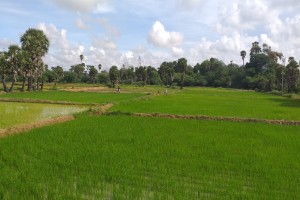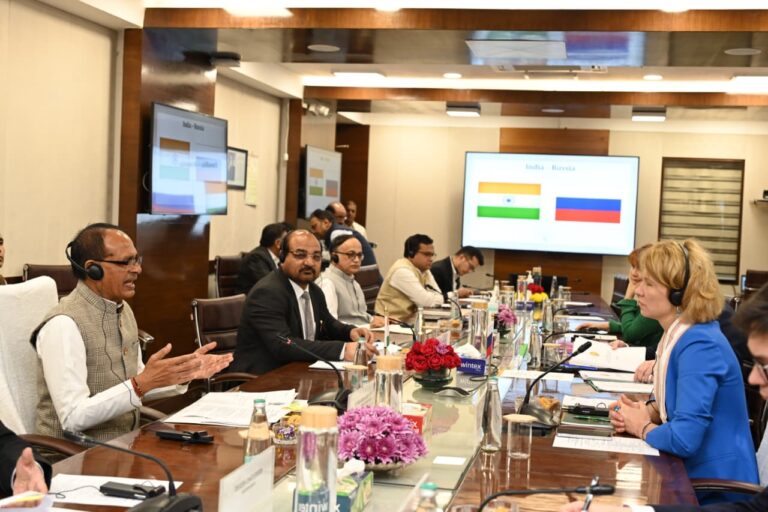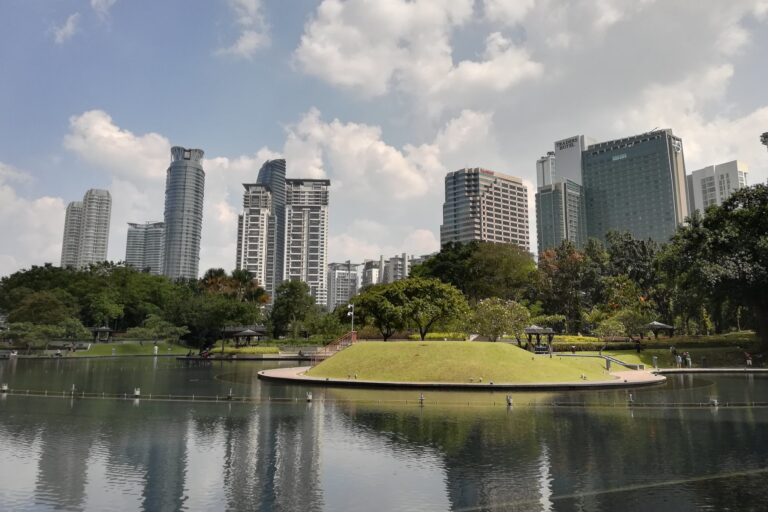
ICT in Agriculture
 By Tiruchelvam Ramu*
By Tiruchelvam Ramu*
To avoid wastage of money, there are issues that should be resolved before allocating more funds, implementing small-scale agricultural solutions
The most important scheme introduced by the government is the plan to double the income of farmers by 2022. If a special Parliamentary debate on the project had been arranged, it would have led to a realization of the seriousness of the current agricultural problem and would have paved way for a new, national approach. As the 3rd wave of Covid 19 is threatening, Parliament needs to bring out the solution to end the farming crisis and making the nation stronger and healthier.
Covid 19 impacts have further complicated the agricultural problem in India, as there is a risk of severe impact on the food security and safety of the country and livelihood of people dependent on agriculture. Hence, implementation of a complete solution that gives confidence to the farmers is need of the hour but with the existing administrative structure of agricultural sector and approach, the agrarian problem can be solved.
Covid 19 catastrophes have emphasized two important issues for human beings. First, the inevitable in life is still food; and second, the body’s immune system is critical to succeed over the danger of Covid 19 virus.
People have started to run in search of traditional foods, naturally cultivated foods. So the environment has changed and quality, nutritious food is the basic need of today’s world.
People’s incomes have been declining due to the general lockdown during the last two waves, that has adversely impacted their purchasing power. Timing restrictions of markets and fears of disease outbreaks have further reduced the number of people leaving home. That has led to a sharp decline in the prices of agricultural produce too.
On the other hand, the unavailability of manpower, high wages, and the difficulty in arranging vehicles to transport farm produce to markets have made many farmers leave crops unharvested. With the prices of many non-agricultural commodities soaring, it is unjustifiable to deny appropriate prices for agricultural products to the farmers. But that too is inevitable. This has further weakened the minds of farmers who are already facing many critical problems.
Also read: Doubling farmers’ income – ICT shows the way
As news spreads that a third wave is likely to come, many farmers are likely to abandon farming. This would be the greatest danger facing since independence. To avoid such a catastrophe, it is necessary to quickly develop a complete solution that gives farmers confidence to continue farming.
With the present administrative structure of the agricultural sector and approach, the problem cannot be solved. That is why the continued increase in funds allocated to agriculture, the quantum of agricultural credit, the increase in subsidies and the creation of new schemes have not been able to solve the problems. It is imperative to make appropriate changes in the current structure, functioning and policies of the agriculture sector. These are the major factors that needs to be addressed at the policy level.
A) Agricultural Structure and Function
- Agriculture is a seasonal profession. Most of the farmers will start working at the same time as soon as it rains. Same thing in case of disease spreads and harvesting. The needs (input, manpower, farm machineries, etc) of a large number of people, to be served within a short span of time, is currently unmanageable by the structure that is at the union/ mandal level and works with some officers to cover thousands of farmers. The immediate need is to expand the structure of the agricultural sector to the village level and to empower farmers to fulfil their requirements at the village level from planning to marketing to achieve good quality & high yield, fair price and ease of doing farming.
- When implementing new projects, it is essential to select qualified workers on contract basis to execute them. Nowadays, most of the time, the work is handed over to the existing officers and the projects they have already involved, lose importance and fail to achieve the targets.
- The creation of a new ministry with the objective of balanced production and deserved net profit of farmers, thereby increasing efficiency through the integration of the functioning of the agricultural sector, which is divided into several subdivisions for administrative convenience. The present system does not insist on responsibility and accountability for farmers’ woes.
B) Water resource
Water has become one of the major factors in today’s agricultural problem. Water sources such as rain water, river water, village water bodies, groundwater level have problems of their own.Efforts to modernize public irrigation systems would benefit significantly. Proper guidelines and regulations regarding drilling borewells are urgently needed.
C) Organic farming
Traditional seed varieties have to be cultivated naturally as the necessity for food is every growing. Nutritious food is essential to boost immunity to tackle the virus threats. Hence, there is a need that more agencies that produce natural inputs should be established at District levels. Mechanism to certify organic produce should be strengthened.
D) Price Factor
Since the markets pay the appropriate price to farmers when there is demand, the permanent solution is to create an opportunity for the farmers to select the crop based on estimated demand. In addition, due to the sale of produce by many farmers at harvest time, there is a temporary drop in prices and causes huge loss to them. To overcome these, it is imperative to provide ‘live crop variety production data’ to farmers at the village level. When there is a permanent administrative structure for agriculture at the village level, it is possible to create the confidence needed for input and product sales online.
There is a perception that an increase in Minimum Support Price (MSP) might trigger food inflation. Net profit of farmers could be increased in certain ways. In addition to the fair price to farm produce, increasing yields, improving quality, reducing production cost, minimising transportation related cost and storage wastages and value-added marketing opportunities can fetch the deserved remuneration for the hard work and risk taking ability of farmers.
E) Agricultural Credit and Crop Insurance
There is no guarantee that a farmer who gets crop loan, uses it properly for his agriculture purpose. One cannot say that he could get quality seeds, fertilizers. There has always been a question mark over availability of manpower and machineries on time. There is also an element of uncertainty concerning adequate rainfall. Yield, quality and price are not assured. Still, crop loan and crop insurance are in place. Policy makers and economists who argue that waiving crop loans would pull down the growth rate of the nation and that farming community have developed the habit of cheating the bankers, may have to raise a question internally as to why government has the policy of crop loan and insurance to a profession, which has many uncertainties.
Few major reasons for offering crop loan are: agriculture is still the largest employer in the country; farmers are doing a tremendous job of protecting the food security of a country of 130 crore people; agriculture is the basis of many important factors related to the progress of the country such as food inflation, export-import deficit, rural economy, people’s purchasing power and livelihood of 60+% of the population.
However, crop insurance, which is supposed to mitigate the risk factor of farming profession, is not strong and comprehensive enough to safeguard farmers. Also, the presence of private companies in crop insurance is not advisable in the present scenario. It can be seen that the high number of complaints received at the farmers’ grievance meetings held at the District Collector’s Offices, are related to crop insurance anomalies.
F) Involvement of Private Companies
Most of the the times, when government allows or ties up with private agencies for agriculture related ventures, protests erupt. Some of the reasons for such protests are:
- The companies working on their toes to keep their quarterly and annual growth rate intact, could not consider the welfare of farmers.
- The past records of private companies, for example, delays in disbursement of arrears to sugarcane farmers, non-fulfillment of promises made during land acquisition, have created negative perception on the private sector.
- People strongly believe that they have moral rights to represent their problems for remedies to the government they elected and this is not in the case of private companies. Beyond all, a private company need not appreciate/ give credit to the contribution of farming community to the nation.
It is very important for the government to select the right partners for tie up to design, develop and implement farming relevant initiatives in India since more than 80% of farmers are small and marginal. More than 50% of the lands are dependent on rainfall alone, and less than 60% of fund are arranged from accredited financial institutions. These truly are examples of a complex system.
Gajendra Singh, a farmer, committed suicide at a rally in Delhi (2015) due to farm debt. The country was shocked on seeing the tragedy live on television. Speaking at the end of a series of debates in Parliament, the Prime Minister had then said, “I wholeheartedly welcome the solution to the problems of agriculture.”
India, a global leader in the field of software industry, having number of scientists and technologists, will surely have the strength to solve the problem of Indian agriculture. With its support, the government should come forward to create a complete agricultural solution at the national level. The government has implemented schemes like ADHAR, GST, Demonetisation, etc and something similar for the agriculture sector is very much possible.
It is important to address the above issues before allocating more funds, implementing small-scale agricultural solutions, as that can lead to wastage of money and time and exacerbating the problem.
*Thiruchelvam Ramu is the originator of ‘Mission IT-Rural’ for ICT driven farming solutions





